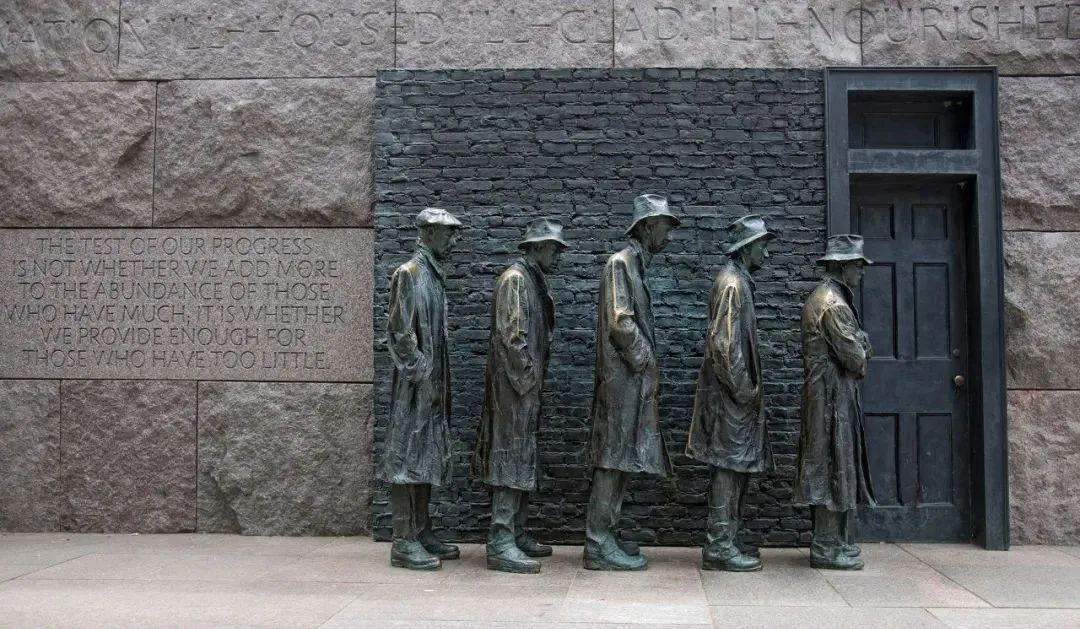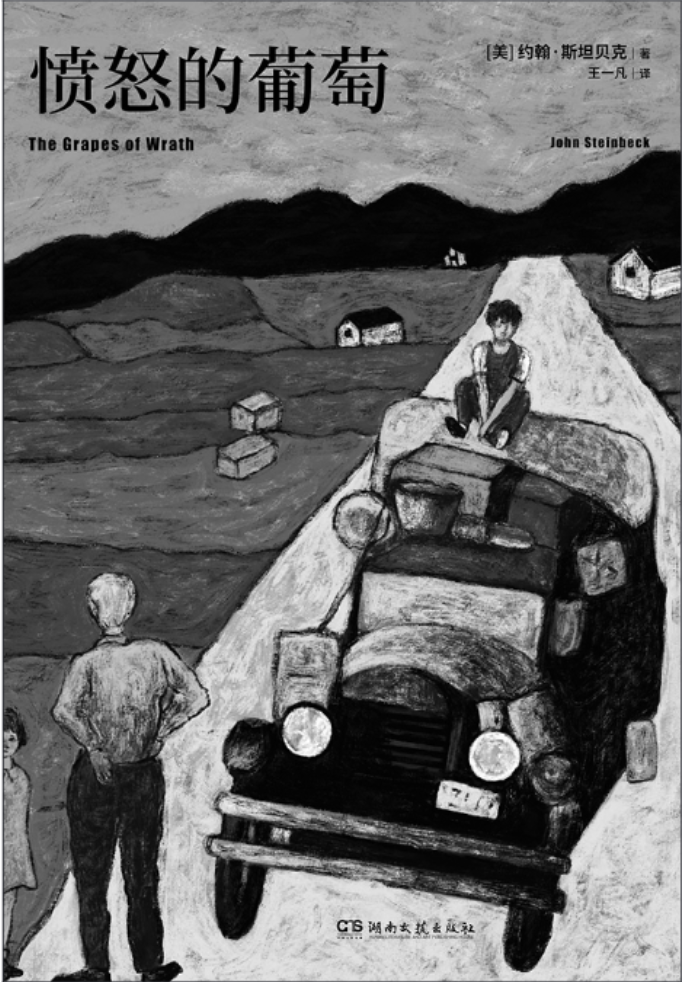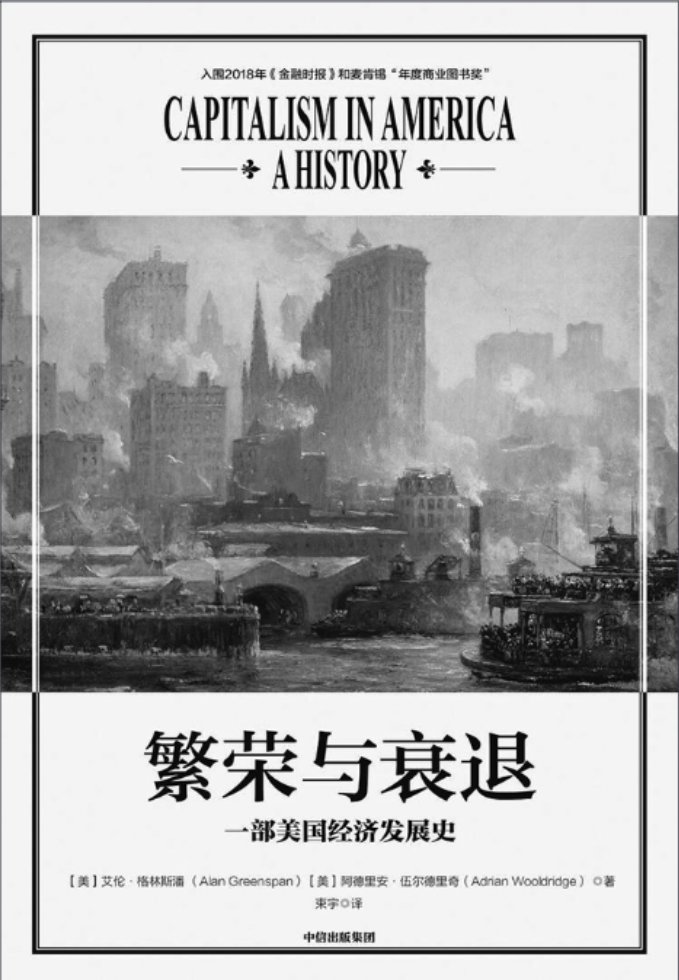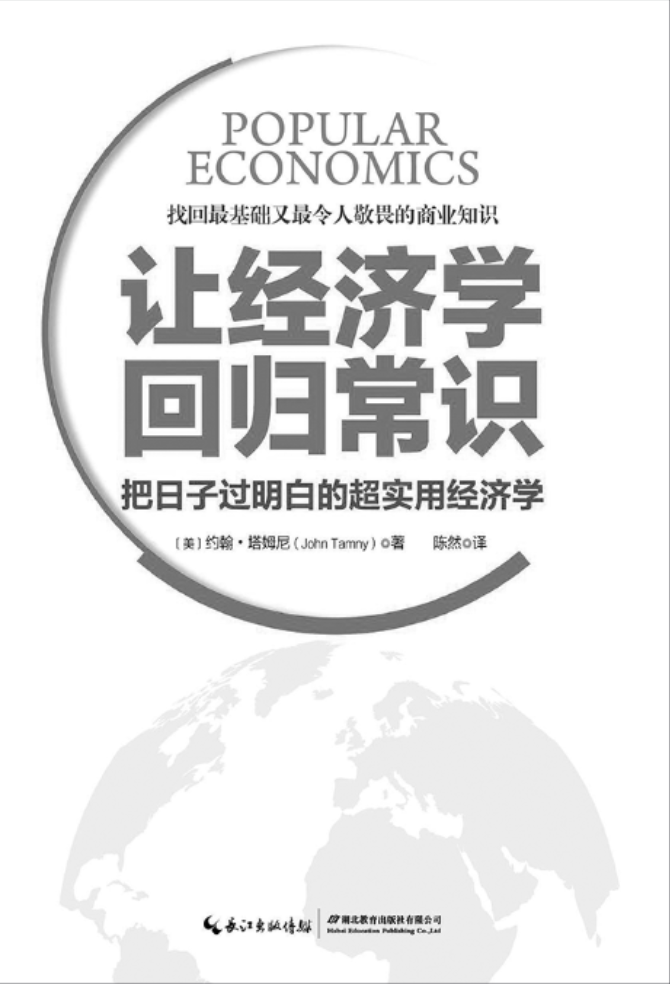Cross the Great Depression: Kanesian and Rooseveltism
Author:Economic Observer Time:2022.06.27

To this day, liberals are still worried about Roosevelt's New Deal. They believe that although the Roosevelt New Deal alleviates the economic crisis and social contradictions brought by the Great Depression, it has also led to a comprehensive expansion of the power of the US President. Roosevelt is the pioneer of the power system of the president, making the United States, which makes the "small government and large society" into the United States of "big government and large society".
Author: Wang Chen
Figure: Tuwa Creative
Before the publishing of "Angry Grape", John Steinbeck was a reporter in "San Francisco News". He followed the story of a large number of farmers' bankruptcy and escape. At that time, the United States was still in the abyss of the Great Depression of the United States. It was difficult to extricate themselves. A large number of American farmers went bankrupt and were forced to migrate to the west.
This work that is considered a strong left -wing color describes the story of the Jade family in the Akensi State in central United States. They were driven out of the land operated by the banks and migrated to the west of California in the west. At the time of departure, there were 13 people in the family. At the end of the novel, there were only 8 people left. Some people escaped and they were missing. Some people died of illness and starved. After many twists and turns, the fate of this family did not show signs of improvement, and on the contrary, it was even worse.
In fact, during the Great Depression, the writer's own life was also very embarrassed. William Manchester (author of "Glory and Dreams") has recorded the dilemma of John Stanback: he was made of lard, plant ash, and salt in his laundry, and he couldn't even afford it. Although the postage of the manuscript was not sold, his agent paid the money for him. Steinbeck later recalled that a sign of a little illness would scare those who lived in unstoppable. "You must have money to dare to get sick. I have problems with my teeth, so all of them fall off." He was in the countryside at the time.
These historical details are inconsistent with the grand narrative of the "Roosevelt New Deal". When "Angry Grape" was published, Frankl in Delano Roosevelt had been in charge of the White House for 5 years.

"Angry Grape"
[U.S.] John Stan Beck/Wang Yifan/Translation
Pu Rui Culture/Hunan Literature and Art Publishing House in June 2019
Alan GreenSpan and Adrian Wooldridge (Adrian Wooldridge) believed in the "Prosperity and Recession" they co -authored that during that period, the United States was not encountered in a period of time. Economic depression, but two major economic depression, interspersed with a weak recovery period in the middle. The first economic depression lasted from August 1929 to March 1933, 43 months. The second economic depression lasted 13 months from May 1937 to June 1938. In the nearly 6 years of the Great Depression, the actual total output of social social output is lower than the historical peak of 25%. Essence

"Prosperity and Recession: A History of Economic Development in the United States"
[U.S.] Allen Greens Panpan Adrian Wooldridge/Wuding Wulu/Translation
June 2019
They even said that the current economists refer to the situation that happened at the time as "another depression in the duration of the Great Depression", or more acutely referred to it as "Roosevelt decline". After Roosevelt took office, the unemployment rate in 1939 was even higher than in 1931. They are more willing to regard World War II as an important reason for the United States to get out of the "Great Depression", that is, at the end of 1940, Roosevelt promised to turn the United States into a "arsenal of democratic countries." After the United States fully participated in the war, this goal was achieved and largely helped the United States out of the dilemma.
In the perspective of war brought about economic revival, similar stories have occurred in Japan. After the Second World War, the collapsed Japanese economy recovered rapidly. In response, Japanese economist Nonaguchi Yuki believed that the reasons were related to the Korean War. "For Japan, this war is tantamount to life -saving gods." Because the United States uses Japan as a supply base in order to support South Korea, the demand for war has greatly increased the demand for market demand in Japan. The Japanese economy, which is in a downturn due to the "Dodge route", can be revitalized again.
Roosevelt's New Deal
Robert William Fogel provided an interesting historical detail in the book "Political Counting: The Empirical Tradition of Simon Kuzsht and Economics": Roosevelt's presidential campaign in 1932 He had criticized Herbert Clark Hoover, and accused him of making the federal government spending a surprising level and causing bureaucracy of the federal government. In the general election, Roosevelt has repeatedly emphasized the balanced budget, without showing any idea of increasing fiscal deficit.
However, after the U.S. President of the United States, Roosevelt adopted measures to make the economic stimulus plan in history through "relief, revival and reform" to make the economy improvement. Essence
In Foggel's view, "Roosevelt New Deal" is not essentially different from his former Hoover. It can be known that in the case of foreseeing an economic recession, Hoover has tried to use tax cuts and expand public projects to compete. With the assistance of the National Economic Research Bureau, Hoover also organized a series of conferences to solve the upcoming economic recession problem. If Hoover did not adopt improper improving tariff policies (signed the "Smt Holy Act"), and triggered retaliatory tariffs on the United States, the United States may not cause a global economic depression so quickly. But history has not given Hoover more opportunities, and Roosevelt's stimulus tools are nothing more than increasing fiscal deficit and expanding public expenses to increase employment. Different from Hoover is that Roosevelt also carried out large -scale fiscal and tax reforms.
In order to solve the employment problem of a large number of young unemployed at that time, Roosevelt established the Civilian Conservation Corps. Members were mainly engaged in architecture in rural areas. 2.5 million youths wore green uniforms to participate in the private resource protection team. Planting 200 million trees, a protective forest belt from Texas to Canada.
In order to revive the economy, Roosevelt launched the National Industrial Revival Law (Nira), which awarded the power of the President to establish the Public Engineering Department and opened the Bald Dam (now Hoover Dam), including Colorado, and three districts in New York. Many public investment projects including Bridge (now Robert F. Kennedy Bridge). Then Roosevelt promoted the establishment of the Public Institutional Revitalization Agency (WPA), a project funded by the agency to hire more than 2 million people, including many writers, painters and actors. The actor was arranged to perform in the mobile theater in the local community, while the artist was arranged to work in public buildings to work in painting murals.
In addition, Roosevelt also launched a series of important bills, including implementing insurance for all bank deposits, issuing new housing mortgage loans, reforming Wall Street, allocating $ 4 billion as federal relief funds, allowing beer transactions, establishing the Agricultural Adjustment Administration and Tennessee Basin Management Management Wait.
William Manchester wrote in "Glory and Dreams": "During the first" 100 -day New Deal ", Congress willingly served Roosevelt, and the power of the president was huge unprecedented, plus everything! It only stops here. "This led to the midway of the US Supreme Court to announce the violation of the National Industrial Revival Law.
Relying on strong personal charm and huge government expenditure, Roosevelt has rebuilt people's confidence in government and promoted the development of the US economy. Data show that from 1932 to 1936, the average annual GDP increased by more than 7.5%. The unemployment rate dropped from 25%in 1933 to 14%in 1937. But similar, the federal government's deficit spending has remained high.
Boton W. Folsom, a professor of history at Man Hills Valentine College in the United States, believes in the book "The Lie of the Roosevelt New Deal" that the policy of a series of government intervention in Roosevelt has improved the public's evaluation of the government, although it has improved the public's evaluation of the government. But failed to achieve the recovery of the economy. Most of his moves had a catastrophic impact on the United States at the time and in the United States.
Formom criticized that to this day, the United States and countries around the world still cannot get rid of the huge negative impact of Roosevelt's political heritage. In 2008, in the global financial crisis, in order to save the country's economy, Western countries have followed the means of government intervention in Roosevelt.
Roosevelt and Kanes
The core of Roosevelt's New Deal is Relief, Recovery, and Reform, that is, on the premise of preserving the basic US system, abandoning the policy of self -adjustment of freedom and self -adjustment based on market mechanisms, and vigorously strengthen the government's social and economic life. Intervention changes local production relationships. The origin of Roosevelt's New Deal is Keynesianism, the trend of practical philosophy and progressism in the United States. Under these ideological and theories, the New Deal increases the government's direct or indirect intervention in the economy.
Later generations believe that in these trends of thoughts, Kanezism has the greatest influence on Roosevelt.
There is no doubt that the British John Merner Kanes is worthy of one of the most influential economists in the 20th century. His book "Employment, Interest and Monetary Theory" not only created Western macroeconomics, but also the economic propositions also had an amazing impact on the interventionist economic policy of the Western world and even the world. As long as the economy has declined, Kanes will be pulled back to reality by governments of various countries to strengthen government intervention and guide the economy through monetary, taxation and public expenditure.
In the new policy affecting Roosevelt's implementation, Keynes did play a key role. After the outbreak of the economic crisis in 1929, Keynes was closely concerned about various measures in the United States. In the U.S. presidential election, he noticed that Roosevelt and the Democratic Party repeatedly emphasized the balanced budget, and published the article "World Economic Outlook" in the May 1933 issue of "Atlantic" magazine. Essence
In order to affect the Americans, Keynes also gave his book "The Road to Prosperity" to Roosevelt, who was about to come to power. "The Road to Prosperity" is the "popular version" of his later published "currency, interest and employment theory". In this book, Kanes uses the theory of multiplication to demonstrate the economic significance of government borrowing expenditure: In a period of a sluggish economic prospect, in the face of unpredictable demand, it is difficult to imagine that the private sector will take the initiative to invest, and government expenditure You can create this valuable demand. In June 1933, the London International Economic Conference was held, and the original intention of the conference was to restore the international funding system. Keynes objected to this because he believes that the golden standard system will hinder the implementation of currency easing from all countries, thereby restricting the government's large -scale investment in public projects. Roosevelt himself also opposed the Golden System. He directly called the telegram to the conference in July of that year to oppose the recovery of the gold. For a while, representatives of various countries and public opinion circles in the uproar, thinking that Roosevelt destroyed the original intention of the meeting.
Kanes saw this result. He published an article entitled "President Roosevelt is very correct" in the Daily Mail, which strongly supported Roosevelt. Since then, the golden position has gradually withdrawn from history, and it has also created necessary conditions for Roosevelt to implement deficit finance later.
In fact, 6 months after Roosevelt joined the White House, the US economic recovery did not improve. Kanes believes that this is because there is no increase in new borrowing expenditures. To this end, at the end of 1933, Keynes wrote a long letter to Roosevelt, suggesting that he rely on borrowing or printing money to expand spending to stimulate the total demand. The New York Times also published this long letter on December 31, 1933.
On May 28, 1934, Keynes finally entered the White House and had a face -to -face talk with Roosevelt for the first time. In these 58 -minute talks, Keynes posted a lot of statistical charts to Roosevelt and told Roosevelt about his "deficit fiscal theory". Subsequently, Roosevelt arranged Kanes to give a speech, mainly the audience of the audience was the president's cabinet member. His speech was more easy to understand than when talking with the president. He told the cabinet members that if the government spent one dollar for assistance, public engineering or any other things, he would create a national income of four dollars. This undoubtedly moved the audience, and eventually caused the Roosevelt government to increase the fiscal deficit.
But before 1938, Roosevelt still did not give up the conservative thinking of balanced budget. When the US economy recovered in the previous year, Roosevelt even began to cut public projects and relief expenses. But at this time, most of the think tanks around Roosevelt have become Kanesist. They warn the president that if the deficit policy is abandoned, the United States will fall into a recession again. Sure enough, in the autumn of 1937, the economic crisis caused by the United States to reduce government expenses again appeared again, and by the end of the year, it was even more obvious. On February 1 of the following year, Keynes wrote a long letter to Roosevelt and persuaded him to implement a large -scale deficit expenditure. Faced with the deepening of the economic recession, Roosevelt had to return to the deficit policy track and asked Congress to allocate $ 3 billion to increase investment in public engineering, relief, flood control facilities, and build houses.
Fortunately, Roosevelt has begun fiscal and tax reform before. Due to the increase in fiscal revenue, the federal government has not carried out serious debt because of increasing expenses. Therefore, some economists believe that although Roosevelt has adopted Kanes' suggestion in the New Deal, Rooseveltism does not mean Keynesianism. There is no tax reform in Keynes' economics. As a politician, the third year of Roosevelt started a large -scale fiscal and tax reform, increasing income tax, and levying excessive profit taxes for the company. On the basis of increasing fiscal revenue, Roosevelt dared to increase government spending and implemented a series of social security reforms.
Foggel also noticed that in general, fiscal policy did not have any effects to help the United States recover from depression. In the first two terminals of Roosevelt, the taxation of the state government and the federal government increased significantly in most years.
Although deficit finance promotes the employment rate in the short term, the effect is short -term. Foggel believes that the main factors of eventually suppressing unemployment issues are the expansion of the army. "The number of serving in the army in 1933 is less than 250,000. But by 1940, this number has doubled. In 1941, the last year of the peace period, the armed forces have increased three times. Millet power and armed force and force and force Military workers absorbed a large number of unemployed workers from the unemployed group. "The book" Prosperity and Recession "recorded a detail: On May 9, 1939, the Minister of Finance Henry Morgan issued testimony on the fundraising committee of the House of Representatives, saying testimony and saying that I said testimony saying Although he is a friend of Roosevelt, the two are also neighbors in New York State, but in his speech, it seems to imply people that Roosevelt's New Deal is a completely failed policy.
Anti -Kanesianism
Kanes's book "Employment, Interest and Monetary Theory" was born in the critical period of the human rescue crisis, and the appearance has attracted great attention. Joseph Alois Schumpeter once recorded the grand occasion at the time: everyone was talking about "Employment, Interest and Monetary theory". The new dawn of "Employment, Interest and Monetary Theory" has aroused widespread attention from Britain and the United States. The majority of students were excited, and a long -awaited enthusiastic wave swept the entire economics community. When "Employment, Interest and Monetary Theory" finally came out, Harvard students could not wait to wait for the new book to be launched: they arranged the first batch of direct operations of the first book in order to speed up the process. Kanes Economics has almost penetrated the history of contemporary world economic history and has a profound impact on economic decisions from various countries. Especially at the moment of the economic crisis, Keynesianism will become the main tool for the government of many countries to fight against the economic crisis, and it will also attract fierce criticism of liberals. Hoover believes that Roosevelt's establishment of the National Revival Administration pursues totalitarianism, and Walter Lipman also describes the National Revival Administration: "Extremely centralized and dictatorship has caused people to appear in American economic life. The disgust of bureaucracy. "The leaders of the union even called the" New Deal "as" business fascism. "
To this day, liberals are still worried about Roosevelt's New Deal. They believe that although the Roosevelt New Deal alleviates the economic crisis and social contradictions brought by the Great Depression, it has also led to a comprehensive expansion of the power of the US President. Roosevelt is the pioneer of the power system of the president, making the United States, which makes the "small government and large society" into the United States of "big government and large society".
The dispute around Keynesianism has never been interrupted in the economics world. The first battle happened between Kanes and Friedrich von Hayek. The core of the dispute between the two is still one of the important themes of the economics community -the huge division of liberalism and state interventionism. The battle has continued, which has profoundly affected the operation of the global economics and government levels.
After the global financial crisis in 2008, the world economy was sluggish. In recent years, trade protectionism and the epidemic of new crown pneumonia have made the global economy even worse, and Keynesianism has been pulled up on a new peak.
John Tamni, a columnist of "Forbes" magazine, is a anti -Keynesist. He has always criticized the U.S. government that spent money to levy taxes to the public and through borrowing. He also sharply criticized the US tax system (and this system is exactly the product of the Roosevelt era). To this end, he also wrote a book "Let Economics Return to common sense". In the book, he advocates a significant reduction in tax rates and allows the market to determine interest rates. At the same time, the government should cancel public assistance, minimize the government, and promote more free economic reforms.
"Let Economics Return to Common Sense: Super practical economics that understands the days"
[U.S.] John Tamni/Chen Ran/Translation
Hubei Education Publishing House November 2016

In the book, John Tamney mentioned a little -known economic recession in American history, and that recession occurred from 1920 to 1921. At that time, the federal government did not conduct too much manual intervention. Instead, it was a limited capital to the private sector by reducing tax rates and reducing government expenditures. The event was eventually linked. So he believes that "inaction" politicians should have a position in heaven.
He politely criticized President Hoover and President Roosevelt during the "Great Depression" of the United States, saying that they were their intervention and brought a 16 -year economic collapse to the United States. Economic policies in large fields are wrong and violate the principle of growth.
John Tamni wrote that decline is the prescription for healing economic problems; decline to clean up bad enterprises, bad investment and labor mismatch, and these are the reasons why the economy is in trouble.
Is John Tamni's criticism completely objective? The benevolent see the benevolence, but the vigilance of the new nationalism and the great government undoubtedly resonates many people. The last chapter of "Let Economics Return to Common Sense" expresses his expectations for Americans to choose a new president of "less interventionism" in 2016.
Of course, History and John Tamni joked, and the new President Donald Trump opened a comprehensive and direct intervention in the economy ... Aiming at Trump's victory, the US "Foreign Policy" magazine asserted at the time. The era of neo -liberalism is over, and the era of new nationalism is about to begin.
Civil servants enter the village to sell housing multinational companies' new posture: From Made in China to layoffs and competition in the manufacturer of Chinese manufacturing, is the programmer still a good job?


- END -
Today Xiaoshu

On July 7, Xiaoshu today.In Yan Yan's summer heat, Zhejiang Satellite TV's Song Yu...
Luo Ming: To be the "red" of the Internet, we need to be an art "beauty" 丨 I have been in the past ten years

###Hello everyone! I am the chief of the Zhengzhou Art Museum Luo Ming, and I also...